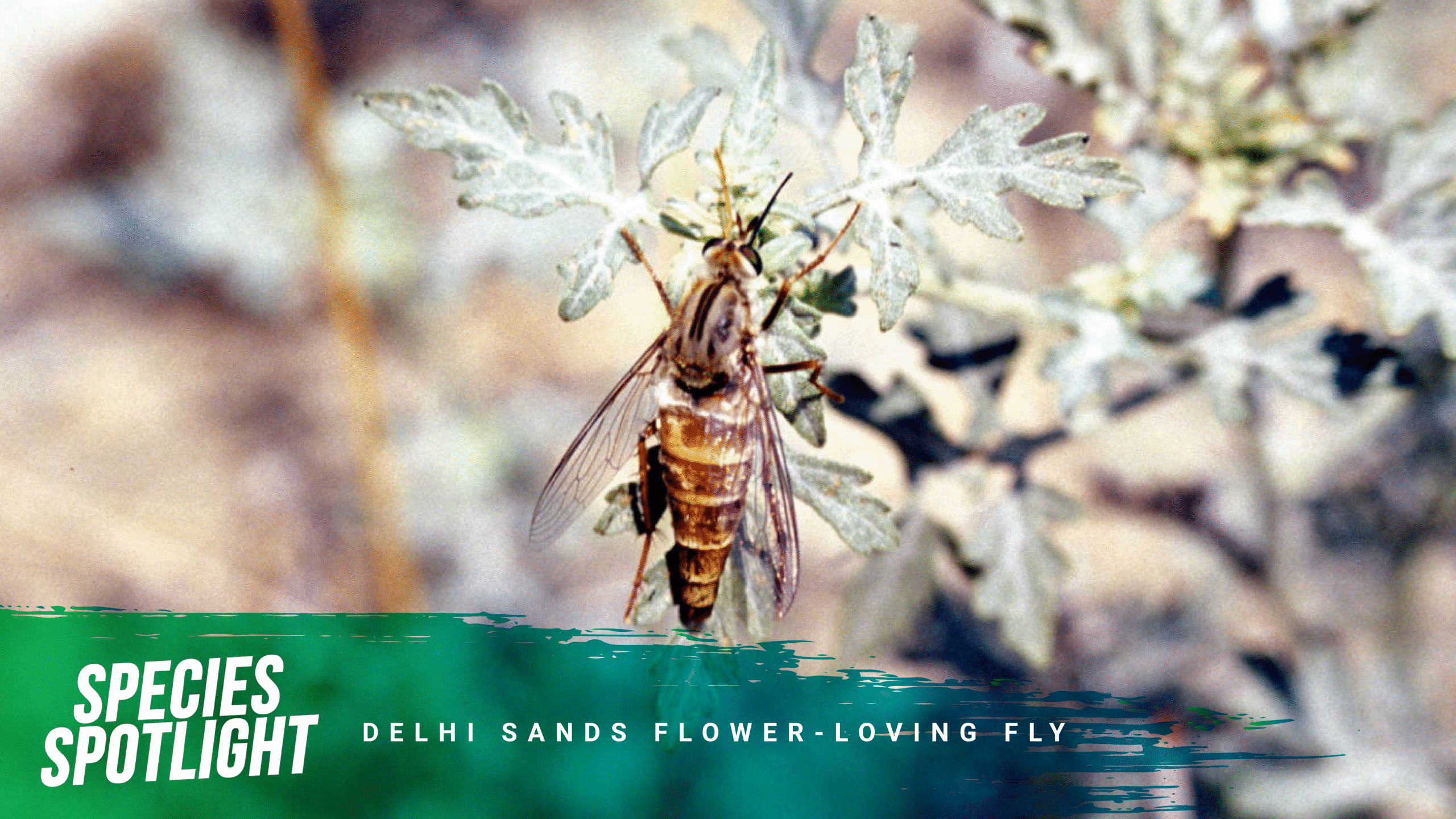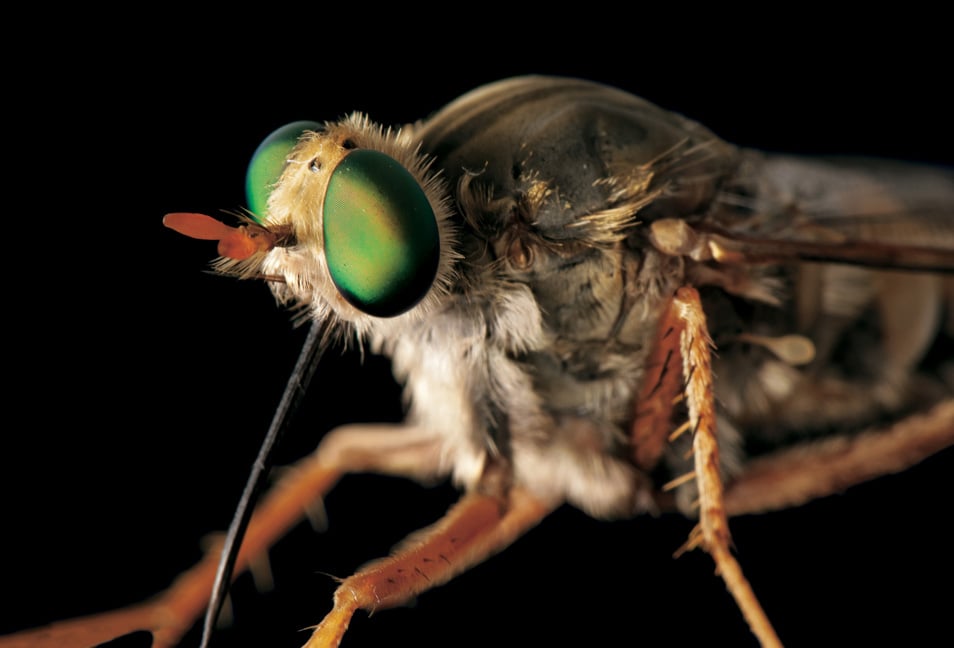Species Spotlight: Delhi Sands Flower-Loving Fly

The Delhi Sands flower-loving fly (Rhaphiomidas terminates abdominalis) is a large eye-catching fly species that measures between half an inch and one and a half inches in length. It has a light brown body, long transparent wings, and striking emerald eyes. The larvae develop underground, emerging from the sand during the hot summer months to complete their transformation into adults. True to their name, the adults feed on nectar from native flowers and live only for a few weeks.
This species requires fine sands of the Delhi series in open dune habitats, and its larvae are specially adapted to navigate through loose sand. However, over time, the removal of sources for the wind-blown sand that historically replenished the open dune habitats by surrounding development, has caused for areas of habitat to be overgrown by dense vegetation, such as California buckwheat, reducing the open habitat that the fly relies on. Without the natural movement and replenishment of wind-blown sand to maintain suitable conditions for the fly, the unique conditions they require begin to disappear. Active habitat management is essential to maintain their open sand habitat and maintain the health of the unique inland dune ecosystem.

In October 2024, the RCA, in partnership with the Rivers & Lands Conservancy and Riverside County Park and Open Space District, organized a volunteer restoration day focused on manually removing dense buckwheat shrubs from sand dunes in the Jurupa Hills. In just a few hours, volunteers successfully removed more than 1.3 tons of strongly-rooted vegetation, helping to restore open dune habitat for the fly.
The Delhi Sands flower-loving fly was listed as a federally endangered species in 1993, marking it as the first fly species to be added to the Threatened and Endangered Species List in the United States. As one of five invertebrates protected under the Multiple Species Habitat Conservation Plan, 220 acres of suitable habitat for conservation has been identified to support this unique species.
